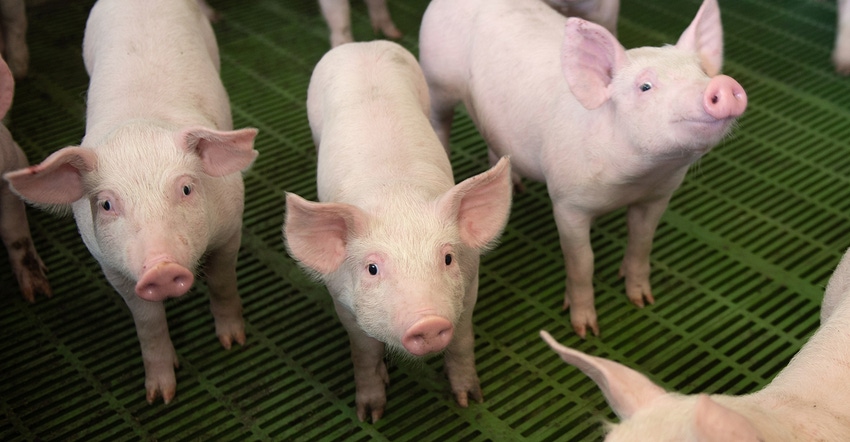Activated MCFAs work quickly in feed and in the digestive tract to minimize disease risk.

Sponsored Content
Stress, ingredient quality and pathogens constantly challenge swine health and performance. These challenges can take a bite out of your financial performance, too.
A multi-faceted solution gives you options to protect pigs and your bottom line. Activated medium-chain fatty acids can address multiple challenges to keep pigs performing despite potential barriers. MCFAs play different roles in swine nutrition.
Activated MCFAs can work in feed before consumption to support biosecurity protocols and minimize the pathogen load pigs face. They continue working inside the pig to provide consistent, broad-spectrum support for swine gut health. Healthy pigs can help decrease the economic impact of disease challenges.
This multi-faceted support is important because we don't always know what pigs or feed might have been exposed to during transport. MCFAs can help minimize the risk.
What are MCFAs?
MCFAs are fatty acids with six, eight, 10 or 12 carbon atoms. But not all MCFAs are the same.
MCFAs can be found in various forms and lengths, and each works differently. They can weaken certain types of bacteria or viruses, which makes them valuable as a feed additive.
One form is activated MCFAs; they are freely available to work instantly. Other sources of MCFAs, including triglycerides or salts, must be broken apart before the MCFAs are activated.
Why MCFA form matters
Activated MCFAs are not bound to other molecules and can work immediately to protect pigs without spending dietary energy to break the bonds. MCFAs that are not activated require dietary energy and are less efficient than activated MCFAs. For example:
Triglycerides are made of three fatty acids connected by a glycerol backbone.
During digestion, the pancreas secretes lipase, which breaks this bond and liberates the fatty acids to interact with bacteria or pathogens in the gut.
The challenge: If you want the fatty acids to be active in the gut, it's necessary to feed triglycerides at high inclusion rates. That is the only way to ensure enough fatty acids can be released by lipase to support swine gut health.
Salts made of fatty acids bound to a calcium or sodium molecule are another common form of MCFAs.
In this form, stomach acid frees the fatty acids, allowing them to interact with bacteria sooner than triglycerides would. The salt form allows for feeding at lower rates than triglycerides.
The challenge: Palatability can be an issue with this form of MCFA because they have a soapy taste.
Putting activated MCFAs to work
Different pathogens are susceptible to different lengths of MCFAs. Feeding a strategic combination of lengths (six, eight, 10 or 12 carbon atoms), provides broad-spectrum support to the pig.
Feeding a single MCFA may work against some challenges, but a strategic blend supports optimal and consistent results.
Strategic blends of activated MCFAs can be fed at lower inclusion rates compared to MCFAs in other forms. These specific combinations could optimize formulation of the ration or potentially lower costs by providing efficiencies in product procurement.
Ultimately, your task is to choose the right blend of MCFAs to address your operation's needs — whether that is responding to an enteric challenge, managing disease risk in feed or supporting operational biosecurity.
Ready to learn more? PMI can help. Connect with our team.
About the Author(s)
You May Also Like



